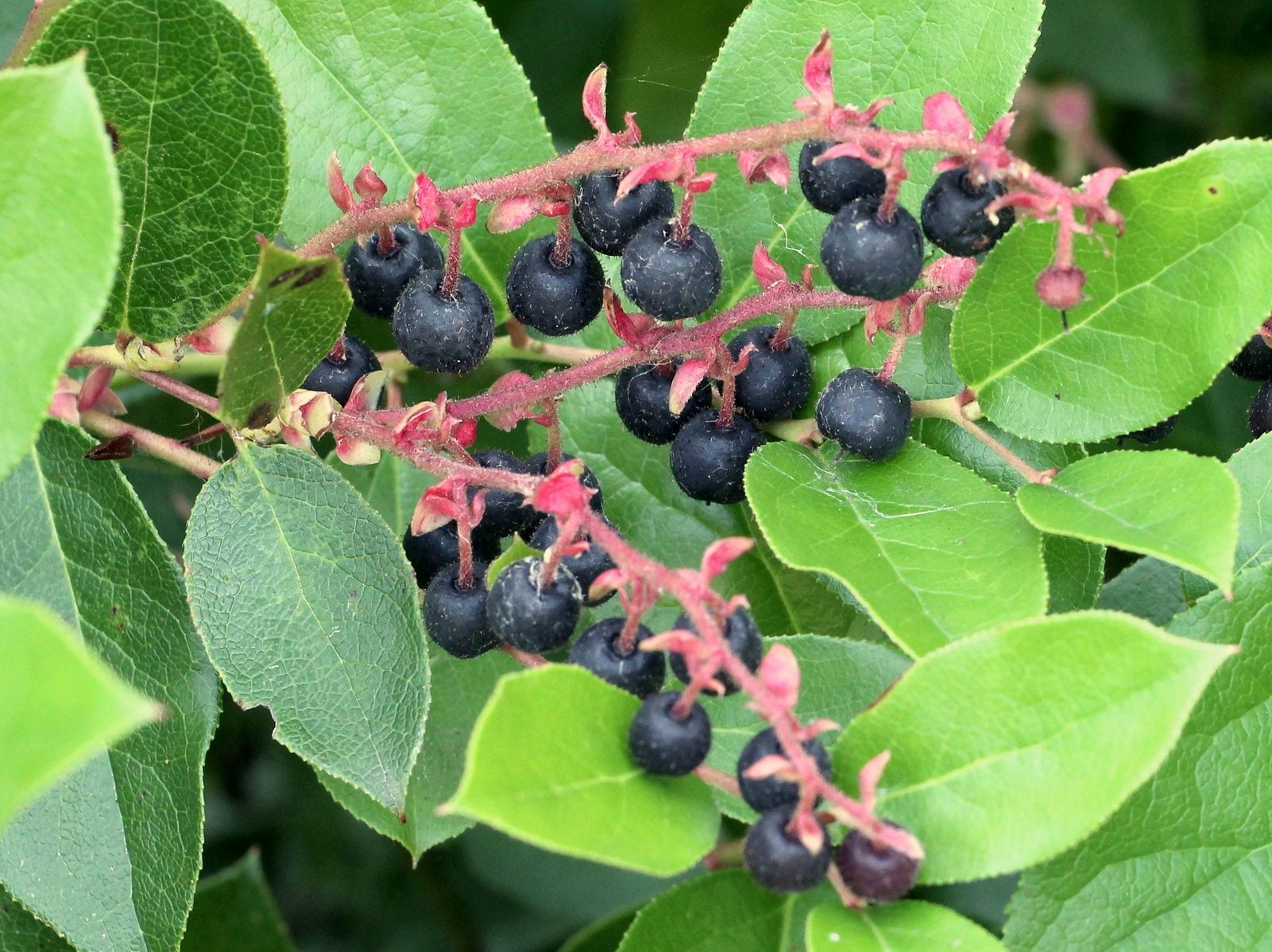Salal Plant Info: Tips On Growing Salal Plants


What is a salal plant? This lush plant grows abundantly in the woodlands of the Pacific Northwest, primarily along the Pacific coast and the western slopes of the Cascade Mountains, from Alaska to California. Although it was mentioned in the diaries of the Lewis and Clark Expedition, salal was a staple of Native Americans long before the appearance of early explorers. Interested in growing salal plants in your own garden? You can certainly do just that, as long as growing conditions are right for this woodland plant. Read on for more salal plant info.
Salal Plant Information
Salal (Gaulthoria shallon) is an evergreen plant with glossy, waxy foliage that remains beautiful year-round. Fuzzy white or pink, bell-shaped flowers droop from the plant in spring, soon to be replaced by bluish black berries. Hikers who pick the berries often find themselves sharing the bounty with bears, deer, elk, beavers, and other wildlife. The berries are also enjoyed by grouse, songbirds, and hummingbirds.
What is Salal Used For?
Salal berries are used much like any other berries, incorporated into jam, jelly, sauce, compote, or fruit leather. While salal berries are flavorful, they are slightly earthier than huckleberries, blueberries, thimbleberries, or wild blackberries. For this reason, many people like to mix salal berries with juicier berries. The glossy foliage is a favorite of florists.
Growing Salal Plants
You may be able to grow salal plants in your garden if you live in USDA plant hardiness zones 8 through 10. Growing salal plants also require rich, well-drained, acidic soil. Salal grows best in partial shade, often reaching heights of 5 feet (1.5 m.) or more. Plants grown in full sunlight may only attain heights of 1 to 3 feet (31-91 cm.).
Salal Plant Care
Keep in mind that salal are woodland plants. Water as necessary during dry weather to keep the soil consistently moist but not waterlogged. A layer of bark chips or other organic mulch helps keep the roots damp and cool. Otherwise, salal plant care is minimal. If necessary, prune the plant in spring to restore the desired shape, or to remove dead or damaged growth.
Gardening tips, videos, info and more delivered right to your inbox!
Sign up for the Gardening Know How newsletter today and receive a free copy of our e-book "How to Grow Delicious Tomatoes".

A Credentialed Garden Writer, Mary H. Dyer was with Gardening Know How in the very beginning, publishing articles as early as 2007.
-
 Moody Blooms For Spring: 8 Types Of Black Flowers To Add Drama To Spring Displays
Moody Blooms For Spring: 8 Types Of Black Flowers To Add Drama To Spring DisplaysFrom midnight burgundies to inky violets, several types of black flowers can enrich and embolden a spring display. Try these brooding bloomers for a moody garden
By Tonya Barnett
-
 Can Snake Plants Live Outside? Everything You Need To Know For Snake Plants Al Fresco
Can Snake Plants Live Outside? Everything You Need To Know For Snake Plants Al FrescoSnake plants can live outside given the right conditions, but be careful that they don't take over! Learn the best way to use snake plants in your landscape.
By Mary Ellen Ellis